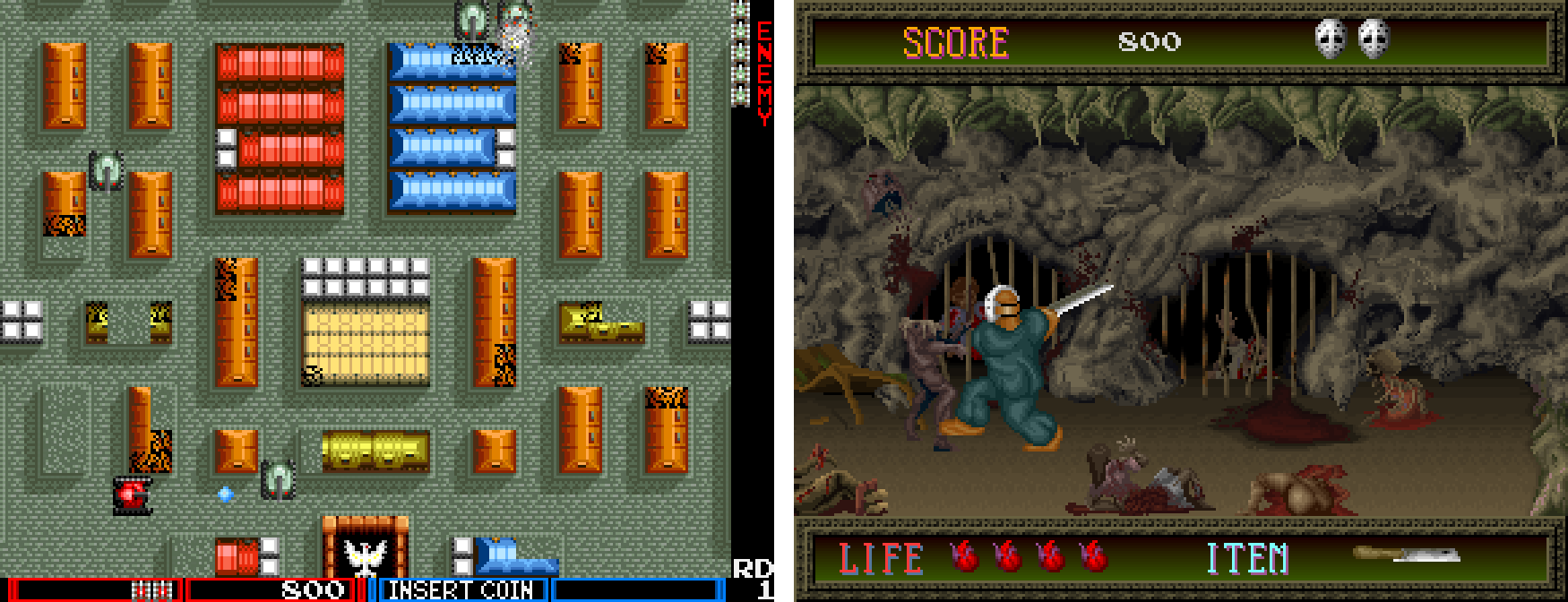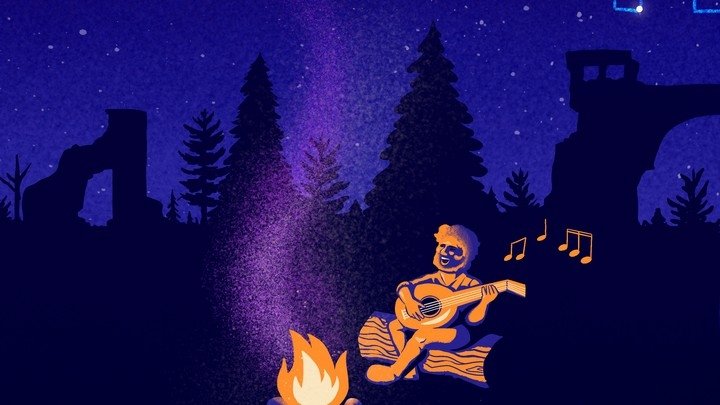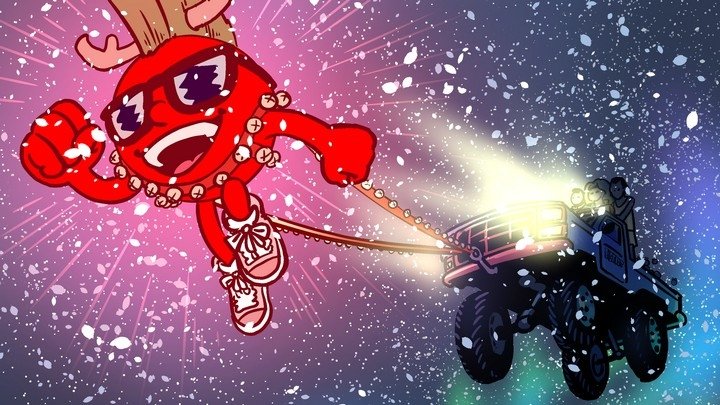Inside the return of Namco Museum
More on the long-running retro collection series, which hit Switch (again) this week.
The Namco Museum series for PlayStation may not have been the first-ever classic game compilations, but they certainly set the standard for the format, with lovingly reproduced arcade hits surrounded by an interactive museum space crammed with historic ephemera. Namco (and, later, Bandai Namco) kept turning out Namco Museum collections for each new console to come along for a decade and a half, revising the specific mix of included classics each time—but after 2010's Namco Museum Megamix for Wii, the line seemed to come to a sudden halt. That made last year's announcement of a new Namco Museum for Switch a pleasant surprise.
Happily, the new interation lived up to its heritage, combining old standards with never-before-compiled vintage coin-op titles. While light on the supplemental material, Namco Museum for Switch offers a healthy selection of great and esoteric titles alike at a reasonable price, and this week the formerly digital-only title makes it to retail alongside some more recent Pac-Man iterations, including Pac-Man Vs. and Pac-Man Championship Edition 2 Plus. Bandai Namco was kind enough to connect us with the compilation's producer, Hisaharu Togu, to share his insights and motivation in reviving the Museum line for Switch.

Retronauts: Thank you for answering our questions about the new Namco Museum. Can you begin by telling us a little about yourself? What was your role in this project, and what history do you have with the games in this collection (whether on the creative side, or just as a fan)?
Hisaharu Togu: Hello, I am Hisaharu Tago, the main producer for Namco Museum.
I started working for Namco in 1994. I began creating arcade games such as Air Combat 22, Tokyo Wars, Alpine Racer 2, and Mobile Suit Gundam: Bonds of the Battlefield. For home consoles, I worked on Soulcalibur V and Pokken Tournament.
When I began working as a game designer at Namco, I found out my bosses were the ones who designed these classic games my generation and I loved in the arcades. They taught me inside stories of their ideas behind the games, so I believe I am uniquely qualified to be working to develop and supervise Namco’s classic titles!
I hope today’s young generation can feel the fun and joy that I felt back in the day playing these classic games through Namco Museum. And for fans from my generation, I hope Namco Museum brings back memories from the days when they were completely absorbed in these titles at their arcades.
R: Prior to the Switch release last year, it had been a long time since we last saw a Namco Museum collection. It seemed standalone a la carte digital releases had replaced the concept of compilations. Why bring back Museum now?
HT: The compilation style that is a staple of the Namco Museum line of games allows players to not only play our most popular classic titles, but also discover some of our more obscure titles as well. So they may buy the game because they like Pac-Man or Galaga, but also get to experience something they either never knew about or haven’t seen in a long time, like Rolling Thunder or Splatterhouse.
R: Do you see this as part of a larger return to the compilations common in the PS1 and PS2 era, or was this simply a one-off?
HT: While this is more of a question for the publishing side of Bandai Namco, I am personally looking forward to making Namco Museum an even bigger title. Namco games are famous worldwide, making appearances in Hollywood, designer goods, and event MoMA exhibits. However, games should not just be appreciated but also enjoyed. I really hope classic titles are played and enjoyed by many people. I imagine one day making a “true” Namco Musem where all past Namco titles are included and available for all generations of gamers. All I need is a request to make one!

R: Are there any plans for additional Museum releases on Switch?
HT: As I mentioned above, that is a question for the publishing are of Bandai Namco, but I personally think that as long as there are fans who want more classic Namco games on Nintendo Switch there is a good possibility that more titles could become available. We are always prepared to start development!
R Nintendo has positioned Switch as a system for head-to-head multiplayer, but there's plenty of single-player-oriented material here — Rolling Thunder, Tower of Druaga, etc. Can you talk about the specific mix of games you selected for Museum?
HT: The game selection for this Namco Museum game was made because it was released so close to the launch of the console. When I first saw the system at Nintendo’s HQ, I felt it was going to be a next-generation handheld system, following the Nintendo 3DS, and focus mainly on single-player games. Also, players who were buying a Switch and Namco Museum so close to launch would probably be more of a core gamer, so we focused on single-player titles so they could play as soon as they got their hands on the game. We also included a few multi-player games in the collection as well to round out the package.
R: Some of these games are appearing in a Museum collection for the first time. What inspired you to revive them here?
HT: If the game claims to be a museum of Namco titles, I think it should have more niche titles that haven’t been ported to another system yet besides the typical Pac-Man and Galaga games, to provide a fresh experience. I do hope one day I can figure out how to bring some of the ride-on arcade games that I took part in developing, like Alpine Racer 2, to consoles!
R: Can you talk about the technical approach you took to the compilation? I've read the games are running on Unity — how did you settle on that approach versus a different solution?
HT: We chose Unity because we wanted to be abel to correspond to the player’s requests as much as possible and not have to reinvent the wheel every time a new console is released. If we have the time and budget, we would rather port a new title and increase the number of titles in a Namco Museum game.
We do have Namco Museum Arcade Pac coming out on September 28th, which brings together not only last year’s digital-only Namco Museum title but also Pac-Man Championship Edition 2 Plus.
R: A lot of these games work and look best in vertical mode, but it's not convenient to use the Switch that way in handheld mode. Did you ever consider collaborating with an accessory maker to create vertical Switch grips for Museum?
HT: Being able to play the game in vertical mode is an important idea if the original game had that orientation in mind. When I first saw the technical specifications of the Nintendo Switch, the first thing I did was to check if playing the game vertically was prohibited or not. An idea for a vertical grip was scraped at an early stage of development. We thought it may be too big and heavy to play with a vertical grip, and imagined many players may already own a tablet holder to physically support the Switch (we used a $1 picture frame stand).
Bandai Namco has provided us with a few copies of Namco Museum Arcade Pac to give away. Check out this week's Namco-themed podcast episode for details on how you can win one!




